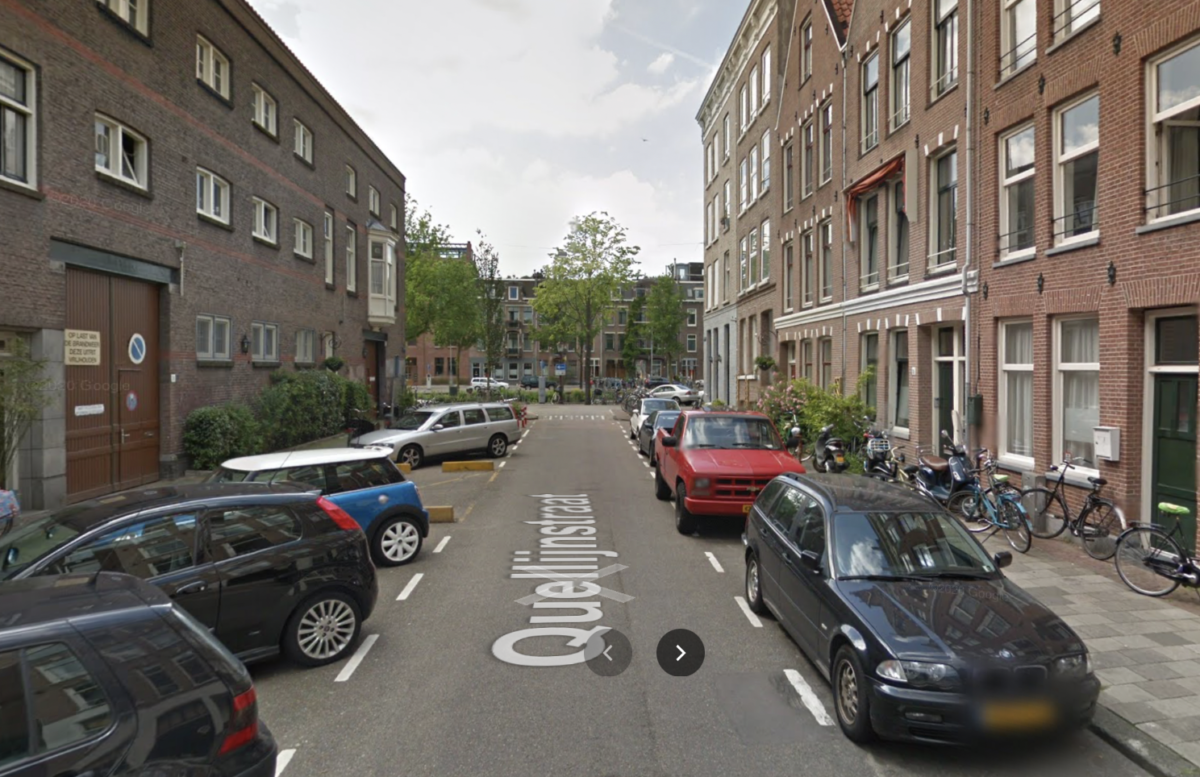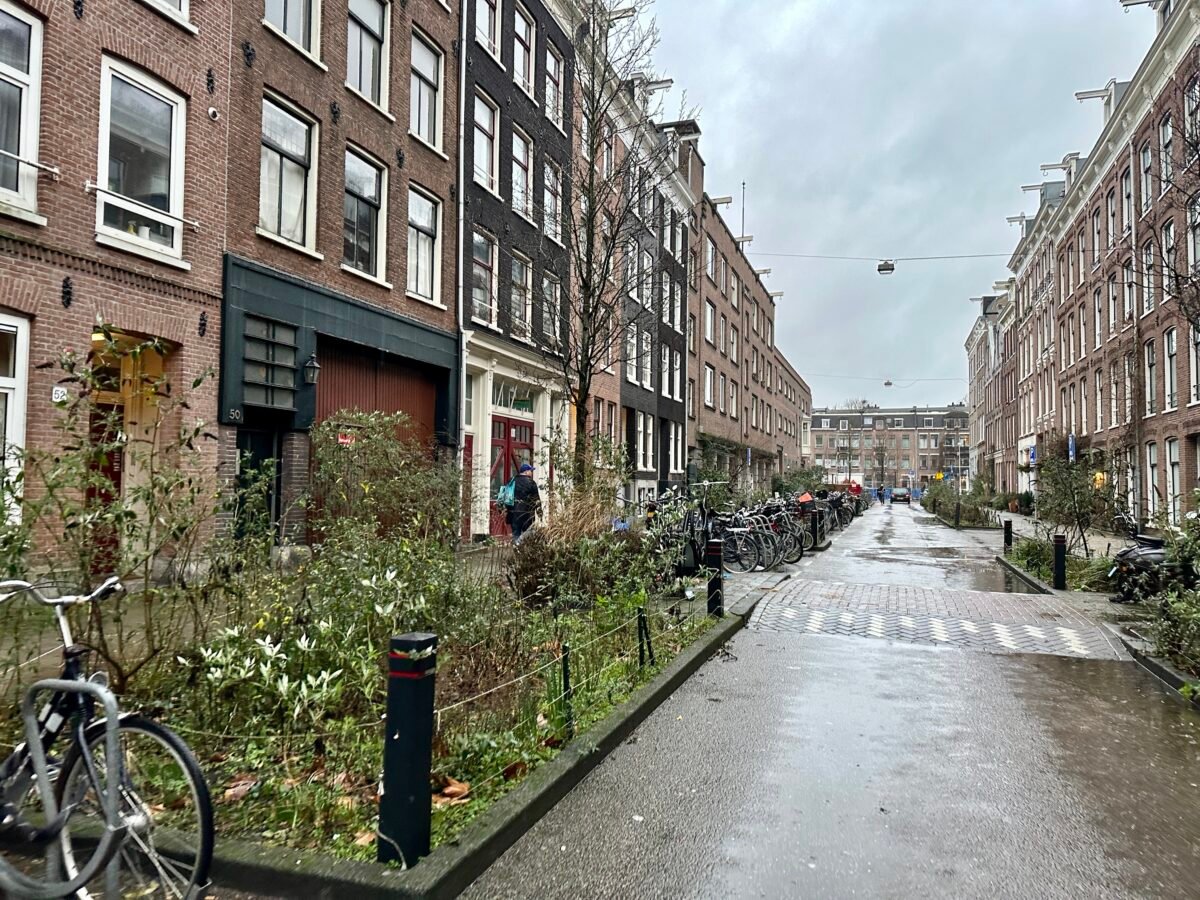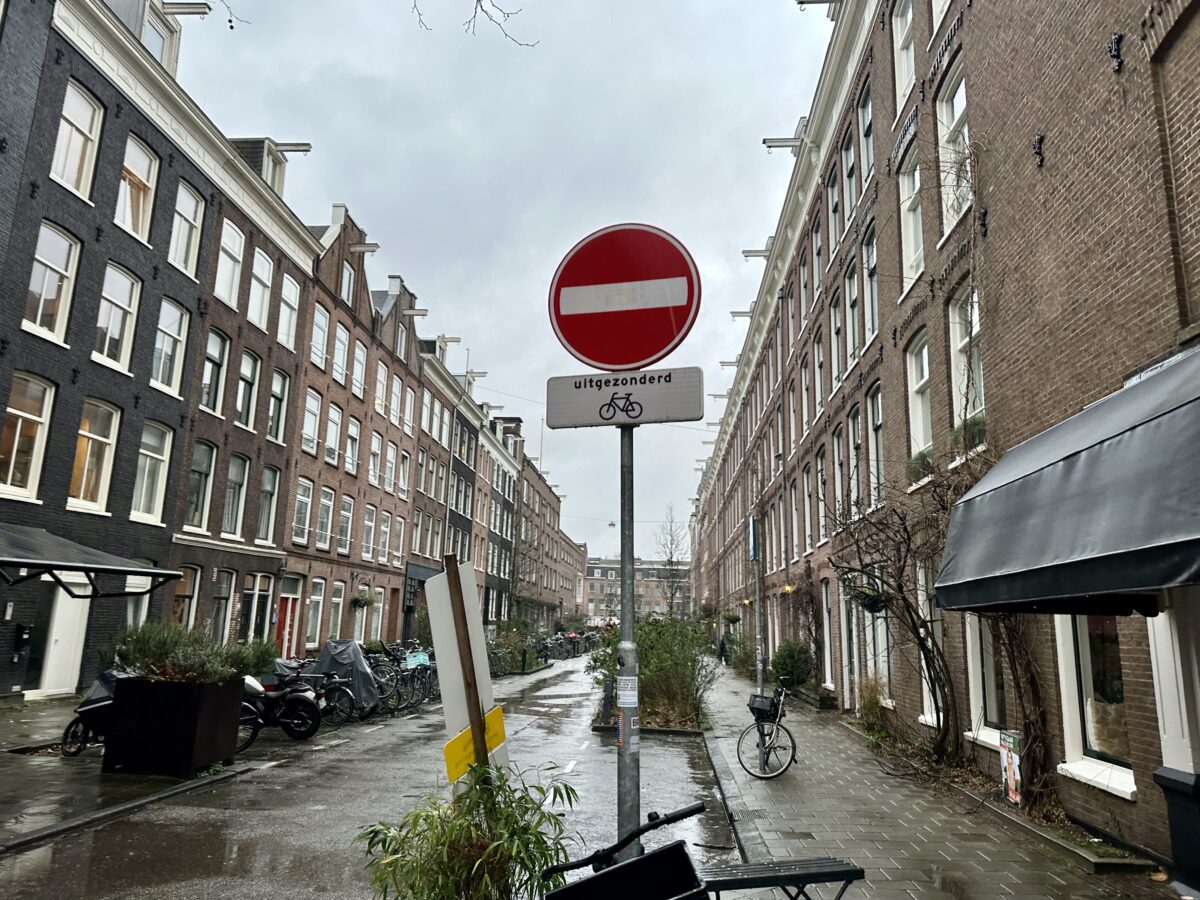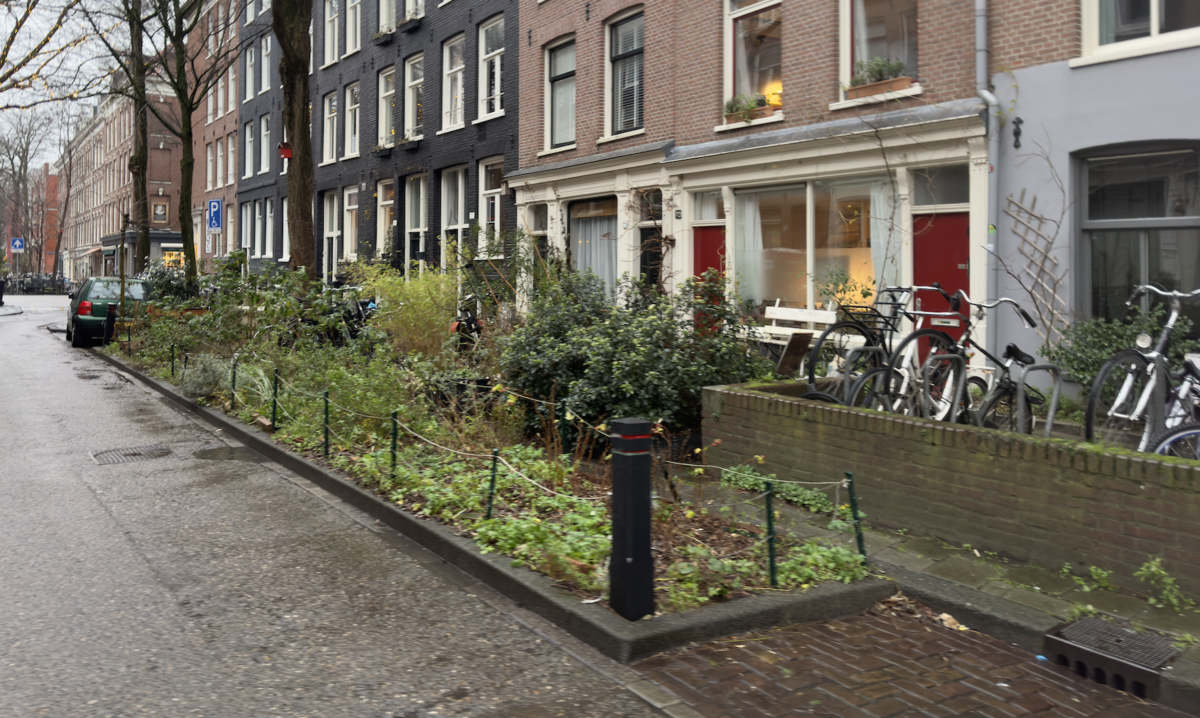

— This post is part of BikePortland Staff Writer Taylor Griggs’ trip through Europe. See past dispatches here.
My exploration of Dutch bike infrastructure continues. Yesterday I wrote about advisory bike lanes, one type of street design that originated in The Netherlands and is now being tested in Portland. Today, as I was wandering the streets of Amsterdam’s De Pijp neighborhood, I noticed another example of an infrastructure concept that a lot of Portlanders are excited about right now: trees in the curb zone.
As it turns out, the City of Amsterdam decided a few years ago to start converting much of the car parking space in the Frans Halbuurt area of De Pijp (and other parts of the city center) into green infrastructure and bike parking zones. Now, there’s even a plan in place to turn this part of the city completely carfree by 2026.
The Portland Bureau of Transportation and Bureau of Environmental Services announced their own Trees in the Curb Zone Pilot Project in November, detailing a plan to trade parking spots for trees in certain parts of the city. Right now, there are a couple spots in the city where planners have tried this before (downtown and on SE Hawthorne Blvd) but now PBOT and BES want to focus the project in the outer Portland neighborhoods, where tree canopy is the most lacking.






This idea has proven to be very popular — even when the BikePortland story about it was reposted to Reddit (which doesn’t always result in the most pleasant discussions), the majority of the comments were positive. Clearly, people want more urban greenery and tree canopy and fewer cars clogging up the sides of the streets.
Walking around Amsterdam today, it felt like the streets had always looked like this. But a quick look at the Google Street View archive says otherwise. Just a few years ago, the areas now filled with beautiful urban greenery, bikes and even a couple of play structures were full of cars.
Even before these green spaces were installed, public green space wasn’t in short supply in the area — there’s a large, beautiful park right in the center of the neighborhood — but of course it’s good to have even more. In Portland, on the other hand, there are large swaths of the city completely barren of urban greenery. It’s easy to imagine the power a project like this could have in transforming these neighborhoods (and the city at large).
Car parking in Amsterdam is already very discouraged with very high prices and limited space. This initiative just underlines the city’s commitment to design that centers people instead of cars — and the positive public response to it. If Portland planners come at their upcoming pilot project with similar fervor, I think we could see the same kind of results.

